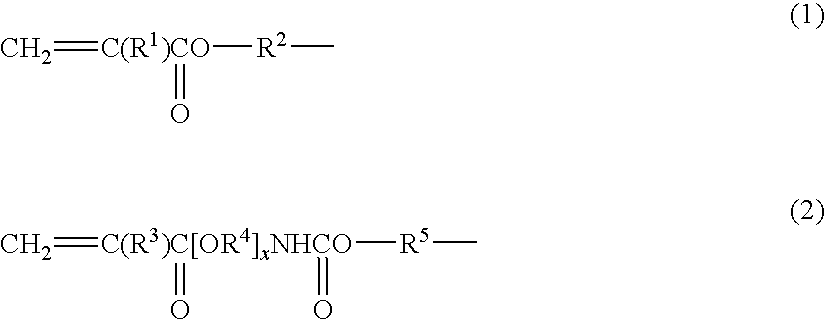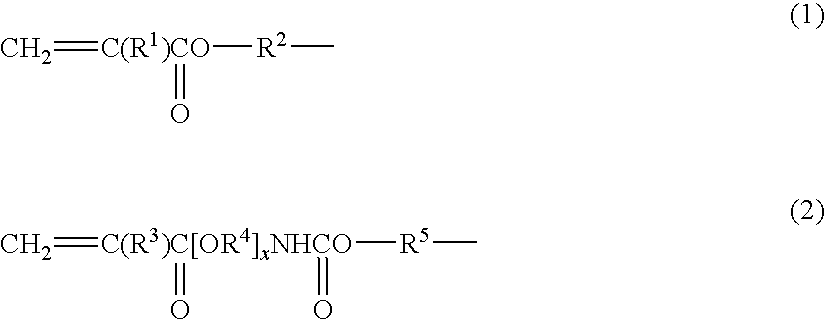High density electrode and battery using the electrode
a high density, electrode technology, applied in the direction of non-metal conductors, cell components, conductors, etc., can solve the problem of more achieve the effect of preventing the permeability of the electrolytic solution, increasing the density of lifepo4, and high theoretical capacity
- Summary
- Abstract
- Description
- Claims
- Application Information
AI Technical Summary
Benefits of technology
Problems solved by technology
Method used
Image
Examples
example 1
Evaluation of Electrolytic Solution Permeability of Electrode
[0178]Electrodes were formed from the below-described negative electrode active substances, positive electrode active substances, and carbon fibers by means of the method described above in (1) and (2), and the PC permeation rate was measured by means of the method described above in (3). Table 1 shows the composition and density of the electrode, and the evaluation results.
[0179]MCMB: mesophase spherical graphite particles (product of Osaka Gas Chemicals Co., Ltd.)[0180]average particle size: 16.6 μm[0181]average roundness: 0.94[0182]X-ray C0: 0.6729 nm, Lc: 84.4 nm[0183]Raman R value: 0.12[0184]specific surface area: 2 m2 / g[0185]true density: 2.19 g / cm3 [0186]SCMG: spherical graphite particles (product of Showa Denko K.K.)[0187]average particle size: 24.5 μm[0188]average roundness: 0.934[0189]X-ray C0: 0.6716 nm, Lc: 459.0 nm[0190]Raman R value: 0.05[0191]specific surface area: 1.1 m2 / g[0192]true density: 2.17 g / cm3
[019...
example 2
[0250]The electrolytic solution permeability of compositions for solid polymer electrolyte was measured in the same manner as in Example 1. The results are shown in Table 2 together with reference date for comparison.
[0251]
TABLE 2Permeation rate of compositions for solid polymer electrolyte in electrodecontaining carbon fiberProportionsComposition forby massElectrodePermeationsolid polymerActiveCarbon(active substance / densityPorosityrateelectrolytesubstancefibercarbon fiber / AB)(g / cm3)(%)(seconds)negativeelectrodeComposition a-1MCMBre-2None95 / 0 / 51.813.01250Composition a-1MCVC2-2VGCF95 / 5 / 01.814.7400Composition b-1MCMBre-2None95 / 0 / 51.813.01420Composition b-1MCVC2-2VGCF95 / 5 / 01.814.7440ElectrolyticMCMBre-2None95 / 0 / 51.813.01050solution (ref.)ElectrolyticMCVC2-2VGCF95 / 5 / 01.814.7210solution (ref.)positiveelectrodeComposition a-1CoO2re-2None95 / 0 / 53.719.21900Composition a-1CoVC-2VGCF95 / 2 / 33.719.4650Composition b-1CoO2re-2None95 / 0 / 53.719.22200Composition b-1CoVC-2VGCF95 / 2 / 33.719.4780Electrolyt...
example 3
Charging / Discharging Cycle Characteristics of Li Ion Test Cell
[0253]A positive electrode and a negative electrode which were prepared in a manner similar to that of Example 1 were employed in combination as shown in Table 3, and cycle characteristics of the resultant cell were evaluated by means of the aforementioned battery evaluation method. The results are shown in Table 3.
[0254]
TABLE 3Charging / discharging cycle characteristics of Li ion testcell employing various electrodes (evaluated by theaverage of two measurement values)Carbon fiberVolumePositiveNegative(amount in positivecapacityelectrodeelectrodeelectrode, amount indensity*1Cycle(density: g / cm3)(density: g / cm3)negative electrode(A · h / liter)characteristics*2CoO2re-1 (3.3)MCMBre-1 (1.6)None220.0110CoO2re-2 (3.7)MCMBre-2 (1.8)None243.385CoVC-1 (3.3)MCVC1-1 (1.6)VGCF (2%, 2%)231.8180CoVC-2 (3.7)MCVC1-2 (1.8)VGCF (2%, 2%)260.5170CoVC-1 (3.3)MCVC2-1 (1.6)VGCF (2%, 5%)236.8240CoVC-2 (3.7)MCVC2-2 (1.8)VGCF (2%, 5%)266.2225CoO2re-...
PUM
| Property | Measurement | Unit |
|---|---|---|
| porosity | aaaaa | aaaaa |
| diameter | aaaaa | aaaaa |
| density | aaaaa | aaaaa |
Abstract
Description
Claims
Application Information
 Login to View More
Login to View More - R&D
- Intellectual Property
- Life Sciences
- Materials
- Tech Scout
- Unparalleled Data Quality
- Higher Quality Content
- 60% Fewer Hallucinations
Browse by: Latest US Patents, China's latest patents, Technical Efficacy Thesaurus, Application Domain, Technology Topic, Popular Technical Reports.
© 2025 PatSnap. All rights reserved.Legal|Privacy policy|Modern Slavery Act Transparency Statement|Sitemap|About US| Contact US: help@patsnap.com



